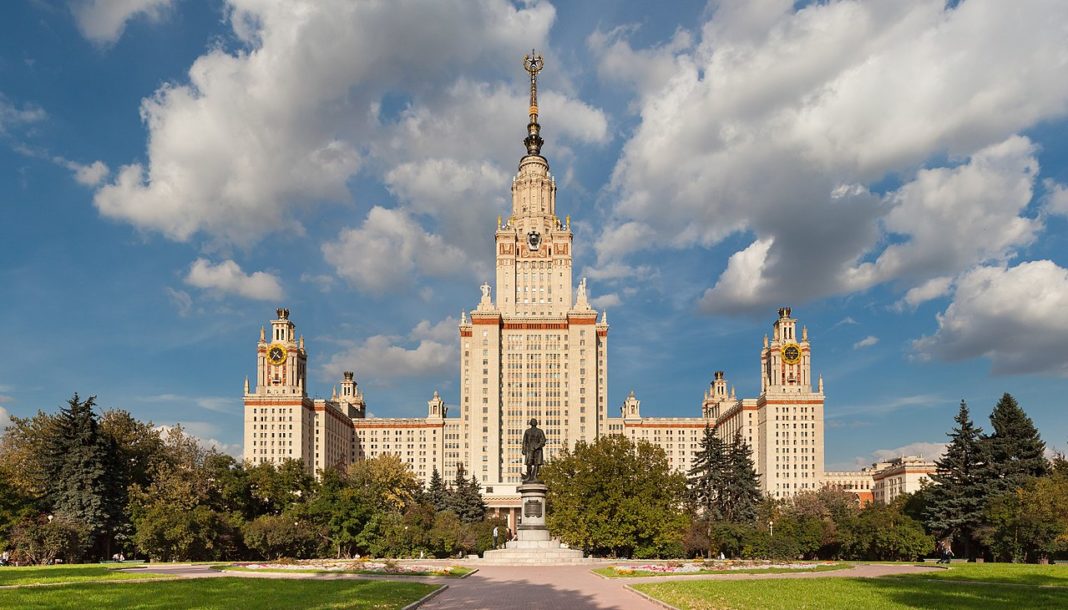Moscow State University ‘M. V. Lomonosov’ (MGU) is a public research university located in Moscow, Russia. It was founded in 1755 by Mikhail Lomonosov, after whom it was renamed ‘Lomonosov University’ in 1940.
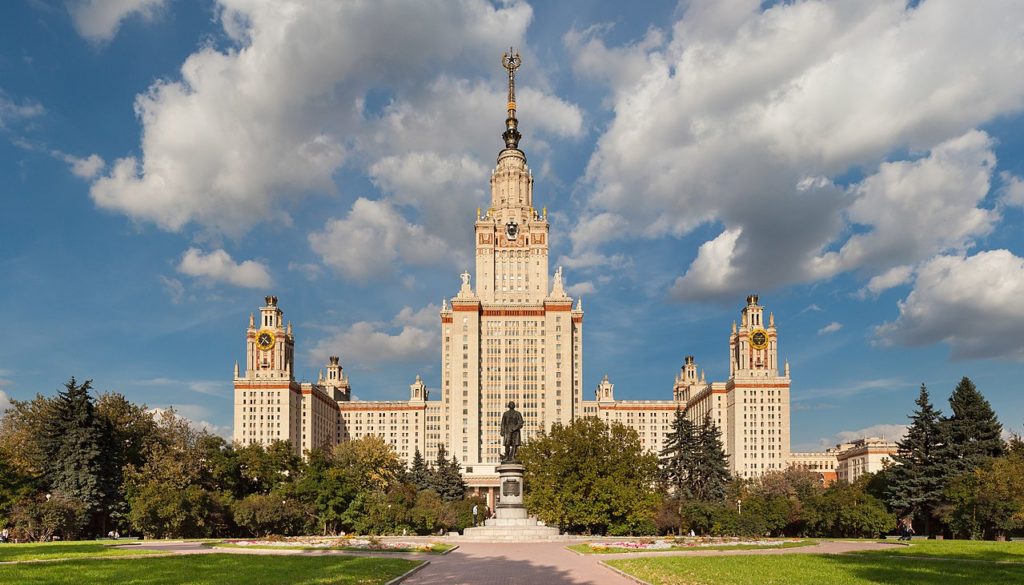
Alumni of the university include leaders of the Soviet Union and other governments as well as a Patriarch of the Russian Orthodox Church. As of 2019, 13 Nobel laureates, six Fields Medal winners and one Turing Award winner have been affiliated with the university. According to the 2019 QS World University Rankings, it is the highest-ranking Russian educational institution, and according to the Nature Index, it is highest ranking Russian university for research output.
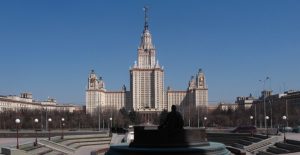
The university includes 15 research institutes, 43 faculties, more than 300 departments and six branches (including five foreign ones – all in the Commonwealth of Independent States countries). Moscow State University is generally accepted as the leading higher educational institution in the former Soviet Union, retaining its legacy from the Soviet era.
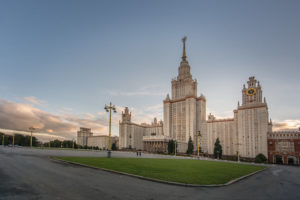
The main building of Moscow State University is a 239-meter, 36-level skyscraper in Moscow, Russia. Designed by Lev Rudnev as the headquarters of Moscow State University, it is the tallest of seven Moscow skyscrapers in the Stalinist architectural style constructed between 1947 and 1953. It was until 1969 the tallest building in Europe; it remains the tallest educational building in the world.
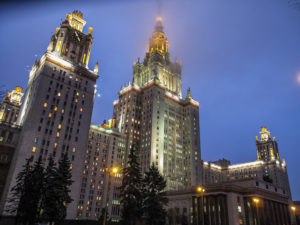
The skyscraper is topped by a 58-metre spire which ends with a 12-ton five-pointed star. Lateral towers are lower than the central one; two 18 and 9 storey dormitory wings define, with the central corpus of the complex, a cour d’honneur courtyard.
The Main Building of Moscow State University is not open to the general public. Visitors from outside the university must be pre-approved by their university host and must submit their domestic passport (Russian) or international passport in order to gain entry.
According to Wikipedia





